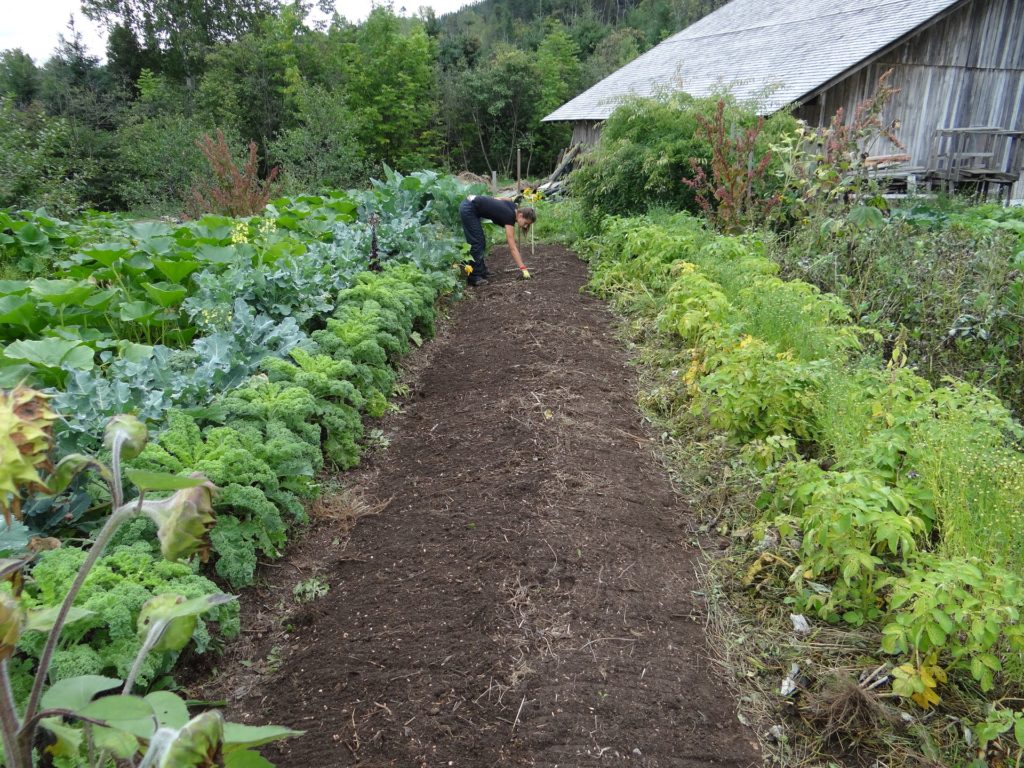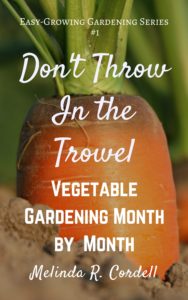
I was having a heck of a time planning my vegetable garden. I didn’t need a lot of plants in the vegetable garden. Two yellow squash plants are more than enough for me, and five tomato plants are plenty (I’m the only one eating the tomatoes in this household). Of course when you’re looking at seed catalogs, you want to buy everything between those two covers, but when you have a small garden, you have to pick and choose so you have room in your garden for everything you want to plant.
So I picked up a copy of Square Foot Gardening by Mel Bartholomew on the internet. What do you know, when I read the book, I found the system I’d been looking for! It’s simple, and it’s not wasteful.
First, the simple part. The backbone of the garden is the one-foot square. You take four of these one-foot squares and put them together in a grid. Separating these squares are paths, about a foot or two wide, so you don’t walk on the soil inside the four-foot areas. (Soil compaction is bad news in the garden. I lay board walkways in the garden so I can keep from mashing the soil. A light, airy soil is very good for plants.)
When you draw the garden plan, you’ll be drawing a lot of “windows,” like the windows a little kid would draw on a picture of a house. In each “pane” you’re growing one crop.
Spacing is pretty straightforward. In each one-foot square you can plant one, four, nine, or 16 plants, depending on their normal space requirements. So, you could grow one tomato, pepper, eggplant, or potato plant per square. Chard, bush beans, herbs, and large lettuce could be planted four per square. Smaller lettuces could be planted nine per square. Root crops like carrots, radishes, and beets could be planted 16 per square. Zucchini gets its own special category – it will take three feet of the four-foot square, and in the remaining area you could plant root vegetables or lettuce, i.e., plants that you’ll have already harvested by the time the greedy zucchini sprawls all over.
Spacing isn’t set in stone, of course. If you want to grow a monster tomato plant that feeds the world (wouldn’t that be nice?), then set it in the middle of a four-foot square and get out of the way.
Plants like cantaloupe, pole beans, peas, and cucumbers can be grown on a trellis, which saves space, and also saves you from stooping over and hunting for the vegetables.
Next, the frugal part. You plant only as many seeds as you need. Instead of dumping an entire pack of lettuce seeds in the ground, you plant nine, or 16. And as for thinning: isn’t it silly to grow all those seedlings, then pull up half of them? Or, on those occasions when you don’t get around to thinning the seedlings, then end up with plants crowded together like sardines. They never reach their full size, so your crop is nowhere as good as it might have been.
Then, once you’ve written out a plan, you can grab those seed catalogs and order seeds to fit those spaces.
The benefits to square-foot gardening are many. To plan, you draw a bunch of windowpanes until you find an arrangement you like. Then scale those windowpanes to size and slap them on your garden plan. You plant only what you need. No waste! You don’t walk all over the garden, just on the paths, and you can reach into the four-foot area and harvest without compacting the soil. If you put scrap lumber on the path to walk on, you can go into your garden even on rainy days. When the plants come up, put a thick layer of newspapers, or a heavy mulch, down around them, to keep weeds down. There’s less work all around – and more time to enjoy gardening.
Don't Throw In the Trowel -- Vegetable Gardening Month by Month

